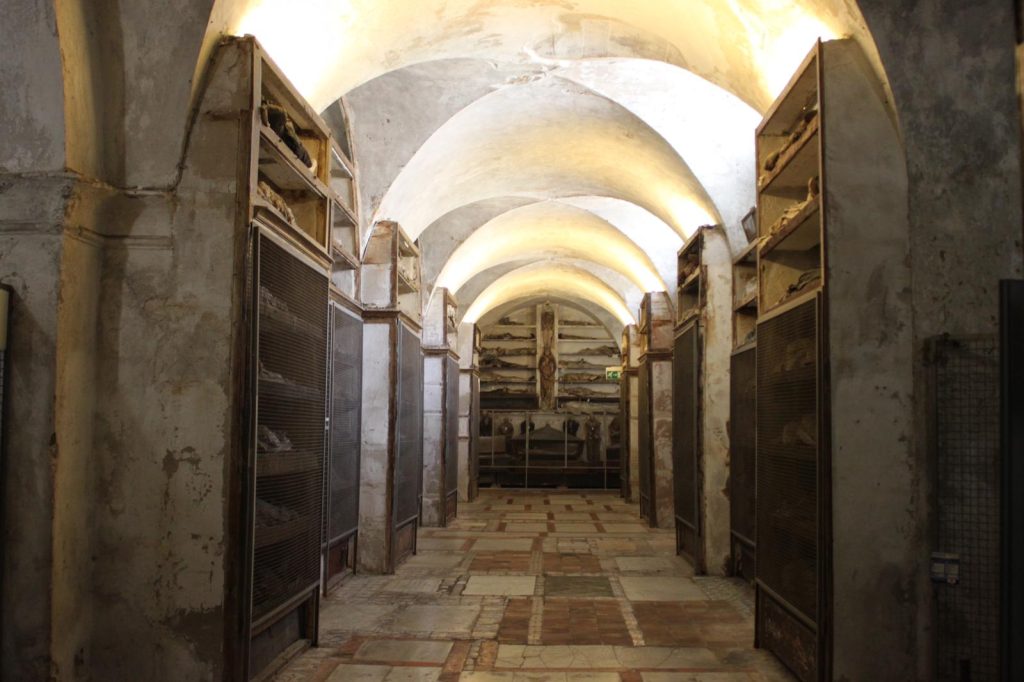Natural Mummification
Most of the bodies found in the Catacombs of Palermo were preserved naturally.
The natural mummification is a process of transformation of the body which is based on dehydration: removing the fluids present in the tissues it stops the growth of bacteria and consequently also the process of decay of the body.
And this is the mummification process that the Capuchins perfected after the miraculous discovery of forty-five corpses intact.
Shortly after death, the bodies were placed in a preparation room called the "colatoio", where were removed the internal organs; in their place were added straw or bay leaves, in order to facilitate the process of dehydration.
The bodies were placed in a supine position on grids made of terracotta tubes, so their bodily fluids could drain away and their flesh dessicate. The colatoio, which rappresented the optimal environment for mummification, with drier air and very low humidity, were then shut off for close to a year. After the corpses were exposed to the air, washed with vinegar and dressed, often in clothes of their own choosing, before being inserted in the wall niches.
At the end, the skin took on the consistency of leather and the body was characterized by a reduced weight and general stiffness.

